Updated: 27-Jul-2020
MICROMOTORES / MODEL ENGINES
(International)
Micromotor is a generic name given to the engines used in model airplanes. There are almost all types of engines used in major aviation.
-They are included in this publication because they are considered equal, regardless of size, because they raise from the ground equally and the operating principles are identical.
-With added merit: they are true gems of mechanics.
-Relatively a short time ago, a new hobby has appeared, that of making models scaled to 1/4 or 1/5 of existing real engines, and that are able to run. This is modeling of a high technical level. See the last part of this chapter.
-In no way can one underestimate the micro-mechanical technique used in the construction of model aircraft engines.
-For example, for a small 1 cc displacement engine and working with the Diesel system it is unthinkable to use segments to achieve the high compression that is required, which leads to well-studied cylinder-piston adjustments even with final lapping.
-From the beginning of the models with a twisted rubber band driving a propeller (Wakefield), to the latest engines used in "Rocketry" we can see the following:
-Vintage, or 1st period.
-Diesel.
-Semi-Diesel (or Glow).
-CO2.
-Ducted Fan.
-Wankel and other specials.
-Pulsejets.
-Turbojets.
-Jetex type rockets.
-Rocketry rockets.
-Electric motors.
-Models from real engines.
-Even though they are all engines for technical games, they are not underestimated by us as they do fly as well.
-We could get into the matter starting with the "Vintage" engines, that is, old, from the beginnings of this hobby.
-One of the first recorded engines was possibly the English "Stanger" of the year 1913, displacing 3.7 cubic inches with two cylinders in V.
-In the 1920’s there are already many engines and the 1930’s are reached when they are mass-produced although in small amounts.
-Here the story was backward, each time these engines appeared with less displacement.
-In the early days, miniature engines were considered "Wonders of Artistic Engineering".
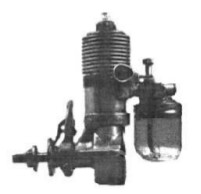
“Vintage type model engine”
-It ran on the two-stroke cycle with a spark plug so it needed a synchronized switch. In most of these engines a breaker is visible in the front of the engine, with a "finger" on a cam of the crankshaft.
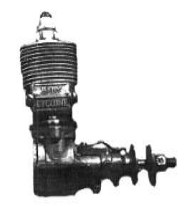
“Cyclone, see the breaker”
-In the United States there were some first brands such as Atwood and their Cyclone and Wasp, Ohlsson, Anderson, Bunch, etc.
-Fox, McCoy, Cox, K-B, etc. appear later, most of them after WWII.
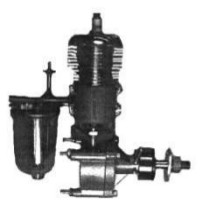
“Ohlsson”
-As we see from the spark plug and the breaker contact, ignition is by spark.
-The engine that runs on a pure Diesel 2-stroke cycle appears later.
-In these engines, the heat from the end of the compression is used to self-ignite the most sensitive mixture they use.

“Bunch”
-The semi-Diesel, which in daily life has only been used in industrial and marine engines, here acquires tremendous importance since speed records and the top positions in races are achieved with this type of engine.
-For speed they use some types of divergent-convergent exhaust ducts.

“Racing-speed exhaust”
-Depending on the engine, they dramatically increase performance. Even taking into account that by FAI regulations, in speed the fuel is the same for everyone, (20% castor oil and 80% methanol) in Spain and specifically in Barcelona.
-Luis Parramón World and European champion on several occasions and in this specialty lately uses Ukrainian Profi engines with that type of exhaust.
-When the engine comes into "resonance" with the exhaust the revolutions rise from below 20,000 to 40,000 !! and the speed of the model exceeds somewhat 300 Km/hr.
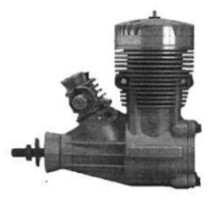
“American K-D”
-To see and hear a semi-Diesel at that moment is impressive: it screams.
-Semi-Diesels are also known as "Glow" as they use glow plugs for starting. At first, they need help with electrical power for heating, then they stay red-hot because of the running engine.
-It is the equivalent of medium marine engines that needed to be heated by a hot-bulb with a blow-lamp in the cylinder head when starting. That was interesting to see on the famous “Golondrinas” in the port of Barcelona, before receiving the modern Diesel engines that they carry now.

“OS Max, geared”
-The United States, Europe, and Japan have been the main manufacturers of model aircraft engines.
-With RC models, semi-Diesels allow a better operation, being able to vary the speed as well. Although lately with the models increasing in size, 4-stroke engines with more displacement are applied.
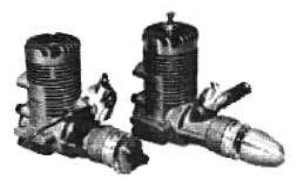
“Webra, glow engines”
-In the 1950s Japan entered this field en masse with its OS Max, Enya, Fuji, KO, etc.
-In Europe: Germany, Italy, Great Brittain, and Russia are the main ones with their brands. The UK with ETA, ED, Frog, etc.
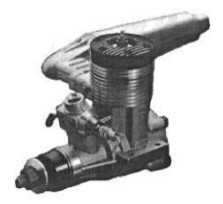
“Rossi Glow with muffler”
-In Germany the Webra engines reign and in Czechoslovakia the MVVS.
-The Profi engines are from Ukraina. Italy is powerful in motors for races and speed with the Super Tigre and the Rossi, followed by Cipolla, etc.
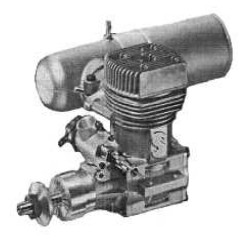
“Super Tigre, Glow with muffler”
-In France, there was Merco and many more in past times than today. For example Cormorant or Simoun.

“Cormoran, Diesel”
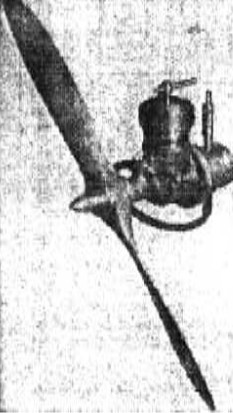
“Simoun, Diesel”
-The low prices in Asia have decreased the rest of the brands. However, when it comes to achieving records they are made with Italian or Ukrainian, that is, European engines always.
-And in Spain, perhaps the first mass-built engine was the "Byra" with a displacement of 2.5 cc. manufactured in the 1950s by Barcelona aviation modeling enthusiast and industrialist F. Batlló.
-It was our first engine in circular flight, a cheap Diesel, which gave us some happy holiday mornings.
-The Byra "round head" was the engine that we were passing from one airplane model to another. Later came out the one with the cylinder head that was fastened with four bolts to the cylinder.
-No kidding at that time and thanks to the ball bearings on the crankshaft it gave 1 CV at 15,500 rpm, with 2.5 cc.
-The rear rotary valve and the possibility of reversing the rotation by changing its position was an added value.

“Byra 2’5 cc”
-The operation principle of the 2-stroke Diesel with carburation and self-ignition made it easier as it did not depend on batteries, cables, etc. For this reason, during many years they predominated among circular flight models.

“Zom 2’5 cc”
-They were easy to start, and you could always adjust the compression according to the mixture and even if it lost quality over the days, or there was engine wear. It was compensated by lowering the contra-piston in the cylinder head.

“Zom cutaway”
-Another later Spanish engine is the one that Modelhob put in our hands, the "Zom" Diesel of 2.5 cc that is shown here whole and cutaway.
-The typical fuel used in Diesel can be 1/3 of petroleum, 1/3 of ether, and 1/3 of castor oil. The proportions can be somewhat varied. In competitions, a small percentage of amyl nitrite or ethyl nitrate is added to give “soul” to the ignition.
-Outside the FAI standard, 75% methanol and 25% castor oil are used in Glow semi-Diesel and lower compression engines, but with the help of a glow plug. In some type of competition, nitromethane is added lowering the other parts proportionally. This same formula with slightly less lubricant is used in the same 4-stroke engines.
-On the other hand, alternative engines have been developed, like their older brothers, horizontally-opposed, Vee, radial, etc.
-All these engines are already 4-stroke. We can see a group of these engines, beginning with a single-cylinder.
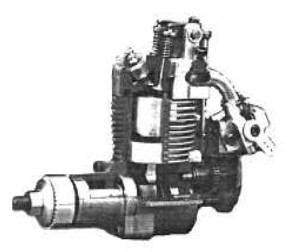
“4-stroke cutaway”
-In this engine cutaway, we can see the valves with their springs, rocker arms, rods, and reduction gear at 2 to 1.
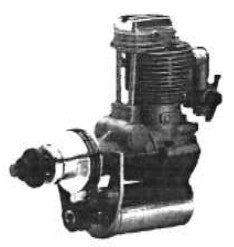
“OS with Starter”
-One more feature is that of this Japanese OS with a built-in electric starter.
-With its horizontally-opposed cylinders, this Kavan simulates the Continental engine cylinders very well.
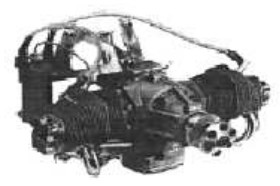
“Kavan twin-cylinder”
-There are model-engines with four or more opposed cylinders like the OS Pegasus.

“2V”
-The V-twin has a huge resemblance to the Guzzi motorcycle engines of California. They run very quietly, smoothly, and they are powerful.
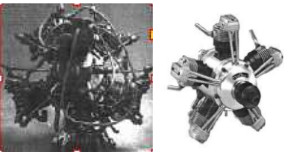
“Morton M-5” “Sirius”
-As for radial engines, in 1945, we already had the Morton M-5 engine, with a not very refined appearance and with disproportionate ignition ramps.
-More contrast still if we compare it with the recent OS "Sirius", which is a five-cylinder as well, but much more streamlined.

"1/5 engine modeling"
-But the wonders of micromotors imitating real realizations do not end here. The modeling of aviation engines has emerged, with small 1/4 and 1/5 scale engines that really work.
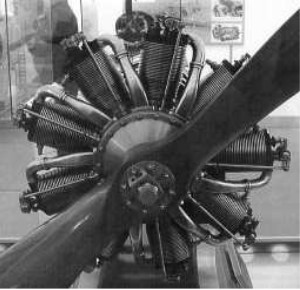
“Le Rhone at 1/4”
-It seems an elitist hobby, but we know people with huge enthusiasm in this matter. They are like jewels of mechanics and although it requires some investment of some consideration, other people invest as much or more in other things.
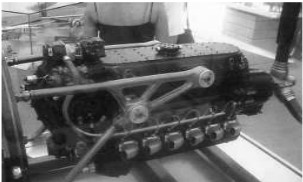
“Daimler Benz at 1/4”
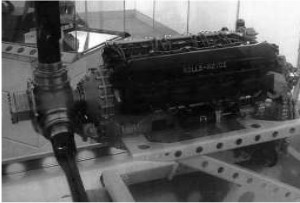
“Merlin at 1/4”

"A venerable OX-5 at 1/5 scale"
-Of the special engines used in model airplanes, experiments have reached Wankel as well. It seemed impossible to make a small motor that requires such a complex seal.
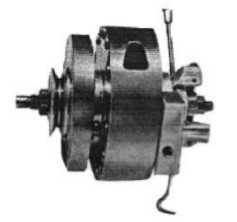
“Experimental Wankel”
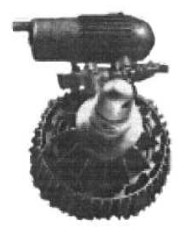
“OS Wankel”
-The latter that has been built by Japanese OS, is based on the Wankel-type NSU and Sachs engines and is marketed through Graupner.
-Continuing with special engines, there are two more piston engines that are very curious as they break with the operation idea of everything seen so far.
-A. Savage's engine is surprising because of its internal mechanism, and because the cylinder is in the down position on the crankshaft. The "connecting rod" has an unusual shape.

"Original mechanism"
-It is undoubtedly an original way to transform the linear piston movement into a rotating crankshaft.

“Savage engine”
-It is not an experiment, because through the shown photograph, the motor is commercialized.
-The same happens with another original engine with an unusual mechanism, that is also sold in various sizes.
-We refer to the RCVs. In this case the propeller axis is the piston cylinder. The crankshaft is in a vertical position and by means of bevel gears it rotates the cylinder sleeve that drives the propeller. A careful observation of the drawing will amaze us of the originality of the design.

“RCV appearance”
-The one shown is the RCV-120SP. they also built the RCV-60, RCV-90 and RCV-120.
-It runs on the four-stroke cycle, and in the diagram, we see that the rotating cylinder sleeve -and propeller shaft- include the hot-bulb internally with ports that match the intake or exhaust and the glow plug.
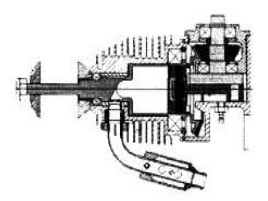
“RCV schematic diagram”
-The true crankshaft is at 90° and vertical, where a coupling allows a starter tool to get the engine running.
-The bevel gear drives another gear that is at the base of the sleeve that rotates at half the crankshaft rpm, thus allowing the four-stroke cycle.
-The propeller acts as a flywheel allowing smooth rotation. In the following exploded view we see all the components.
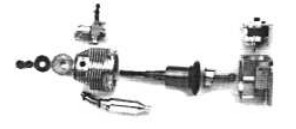
“RCV exploded view”
-Another type of engine that is still made and that is original from the beginnings of aircraft modeling is the one that works with compressed air, rather with CO2.
-Taking advantage of the fact that there are small pressure bottles nowadays. We can see that below.
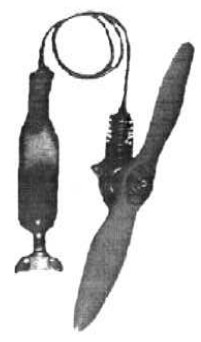
“CO2 engine”
-The motor itself is an alternative machine, not thermal. We found an interesting ad for a rotary carbonic acid engine like the one used in small pressure bottles.
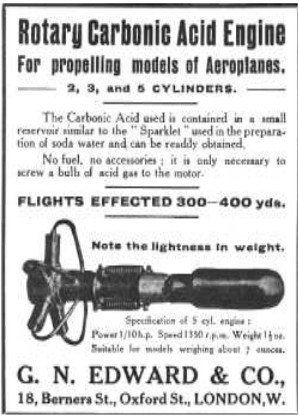
“5-cylinder rotary engine”
-The illustrated engine of G.N. Edward seems very interesting and from what is indicated, its performance was not to be neglected.
-Before treating another type of propulsion for small model airplanes, those for jet propulsion, we mention that there is a mixed solution between piston and turbine engine.
-In transition times and to enhance the jet models, clean of lines, a system has been found which is to introduce tubes with ducted fans into the fuselages, driven by the existing Glow engines.
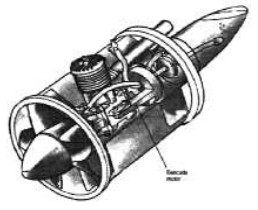
“Ducted Fan”
-The most spectacular part of model aircraft has always been reserved for jet propulsion and until now, pulsejet engines with which speeds of over 200 km/hr (124 mi/hr) and tremendous noise are achieved.
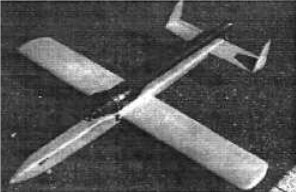
“Model with pulsejet”
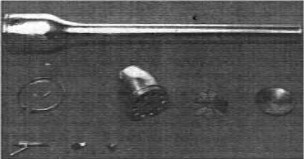
“Pulsejet components”
-These engines have the same basic parts as the Argus V-1, although simplified in all their elements: the shutter valves becomes a daisy-shaped sheet in which each "petal" covers a dynamic front inlet.

“Zanin pulsejet”
-In the photo of the Italian Zanin we see the daisy and the head where the air-fuel mixture is sprayed before entering the chamber.
-To date, the most common brands in circular flight have been the Dyna-Jet, Fox, Booling, OS, McCoy. And lately, and in radio-controlled flight we find Italian Giuseppe Dardanello who delights us with spectacular flights with his single-engine and twin-engine, carrying the latest generation Zanin pulsejets.

“Giuseppe Dardanello”
-The difference between the Zanin pulsejets and the previous ones is that in its head it allows fuel dosage and the mixture is more sophisticated. It has a shut-off valve and gas control by radio-controlled servo.
-Today once entered the 21st century, pulsejets are following another path, although it was already known a long time ago, that of valveless engines.
They are ducts of very calculated dimensions, but they work perfectly, and they are adjustable if propane is used. They are based on the "Valveless Chinese Pulse" or Fo-Mi-Chin principle. A second variant is the FWE (Focused Wave Engine) and another one is derived from the Thermojet (see).

"Thermojet variant"
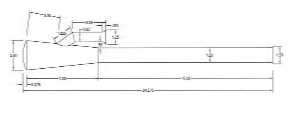
“FWE plan”
-Regarding valveless pulsejets, in the 1950's, Snecma had already tested the Escopette and Ecrevisse. (see Snecma).
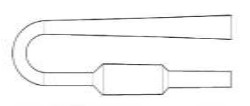
“Lockwood-Hiller”
-Also Lockwood and Hiller. They are similar to the French Snecma Ecrevisse. It is a matter of dimension calculations.
-Currently, there is a civil amateur group dedicated to the study of various pulsejet forms in the USA.
-Another example is that of multiple inlets that we see below. Besides the photograph is made in a moment of static operation, because unlike valved pulsejets that need incident air to spray the fuel, these valveless ones, when running on propane, do not require this circumstance.

“Multiple inlets”
-In fact, it uses the Escopette principle, but with multiple inlets.
-What impresses is the simplicity of the Mini-ThermoJet, which in the photograph is held by a hand, indicating the actual size of this device.
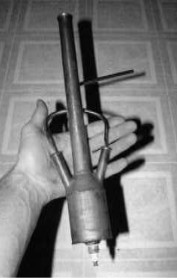
“Mini-thermojet”
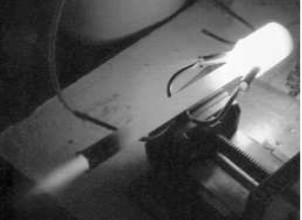
“Thermojet in static mode”
-Lately, small turbines have also entered airplane modeling.
-In the JPX chapter we already saw the engines that are offered by this brand.
-The components of these microturbines are the same as the major ones. Only the controls are more simplified.

"Compressor-diffuser-turbine shaft"
-There are already enough small turbojets on the market to be able to build all kinds of more realistic aircraft.
-To JPX, you can add Artés, AMT, Turbomin, Sophie Precision, GWM, etc. Their engines are running on gas or kerosene.
-The ArtésJet for model airplanes is currently being built in Barcelona. It started in the mid-1990s with one model, the KJ-66, which was available from 2002.
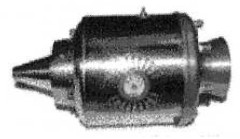
“KJ-66”
-This would give way to a series such as the Rhino, the Eagle and Super Eagle, Falcon, Bee and Nano-Bee and finally the Elephant.
-They are delivered in a box with the ICS electronic start control, a kind of Fadec.
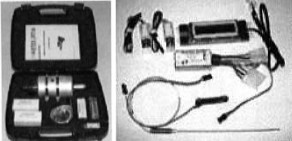
"ArtésJet and ICS Case"
-As we see it is no longer a simple game. Some of the microturbine engines are used in UAVs, such as those designed in Madrid by Aerodisa, the AED-310, -312, -410, and -414.

“Aerodisa AED-310”
-Aerodisa has a CAD-CAM design and machining workshop.

“Aerodisa machining detail”
-The Dutch AMTs are offered in various models such as the AMT-1 known as the "Mercury HP" (HP stands for High Performance) that was introduced in 2000. It gives a thrust of 88 Newtons (almost 9 Kgf) at 148,500 rpm. The diameter is 100 mm by 220 mm long, weighing 1.4 kg.
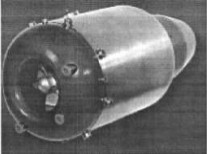
“AMT-1”
-The AMT-2 microturbine, called Pegasus, delivers 14 Kgf. (125 N) at 112,000 rpm with 120 mm in diameter.
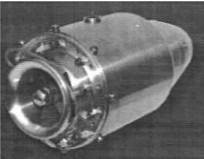
“AMT-2”
-And the AMT-3, the Olympus, delivers 190 N at 110,000 rpm with 130 mm in diameter.
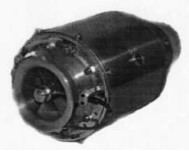
“AMT-3, Olympus”
-We already discussed the French JPX in its section. JPX-T250P is powered by propane gas.
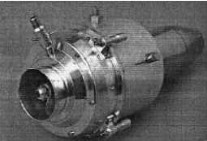
“JPX-T250P”
-Its design is from 1995 (the JPX-T-240 was from 1992) and in 1996 the T-260 appeared and the Alta Performance version came out the following year.
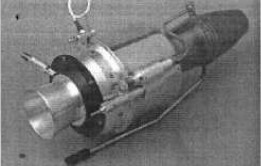
“JPX-T260”
-Sophie Precision from Japan has the J-450 model that was originally a development of the French JPX-T240.
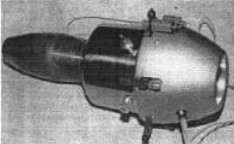
“Sophie”
-Of the small turbojets, the Turbomin engines that appear as the T-60 and T-100 run on kerosene with the “total-loss” lubrication system, that is, that the oil is not collected: it comes out through the nozzle mixed with the gases.
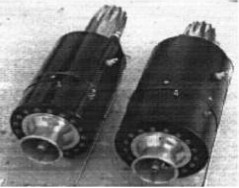
“Turbomins”
-The Turbomins have the combustion chamber inverted to the flow. The compressor is centrifugal and the turbine is centripetal.
-With all of them starting is done by compressed air on the compressor impeller, blowing at a certain angle.
-Another form of jet propulsion was the pioneer commercially speaking and outside the experimental field.
-In the 1950s, the famous “Jetex” fell into our hands (soon imitators appeared).
-They used "sweet" solid fuel pellets, of soft propulsion and they were applied to small gliders in order to prolong their flight, more majestic if possible.
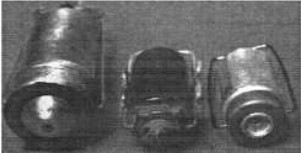
"Various Jetex engines"
-They were opened with a “clip” and after cleaning, they put new pellets, the filter-grille for impurities, and the ignition wick.

“Jetex elements”

“Japanese version”
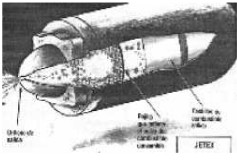
“Jetex set”
-The engines used in rocket modeling (Rocketry) run on solid fuel as well.
-That is why the one running on gasoline that we show below stands out. Incidentally, outside of those marketed, there are prohibitions on the use and testing of rocket engines, due to their danger.
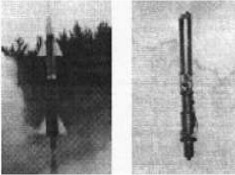
“Solaire on gasoline”
-There are many associations of rocket modeling, or "Rocketry" as it is known. Specialty stores offer all kinds of engines and rockets.

"Preparing a launch and a solid fuel engine"
-Finally, the electric drive. New powerful and very small and light electric motors are being applied to radio-controlled modeling, some powered by batteries and others by photoelectric cells. They have displaced many hobby flights of classic and/or rubber-band powered gliders.
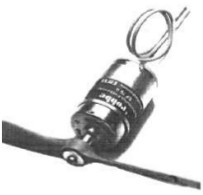
“Electric motor”
From Appendix 6: The advance of small turbines for model airplanes is notorious, now there are some reverse-flow turboprop engines capable of simulating the classic Pratt & Whitney PT6, possibly for models.

“Small turboprop”
-We expand this chapter with some curiosities that appeared in Popsci, the American magazine of Popular Science.
-The first one, from the year 1941, is a two-stroke engine with spark-ignition but mechanically supercharged.
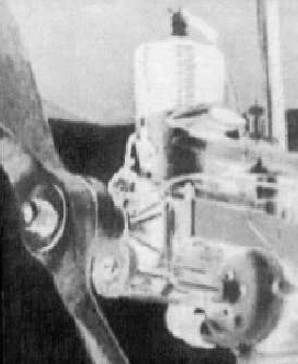
"Supercharged micro motor" (PiP)
-A roller is applied to the crankshaft main journal, which serves as the base for the propeller, transmitting the rotation to the rear compressor.
-As a result of WWII and the success of the German V-1s, the simple propulsion system that it used was applied to model airplanes, even more simple, when it came to fuel injection that became carbureted.
-The original shutter valves became daisy-shaped sheets in front of a crown of inlet holes to the combustion chamber.
-A comparative image of the two systems is shown below.
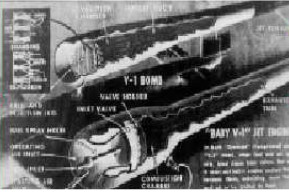
"Both engines and their similarities"
-The direct inlet of the V-1 engine becomes venturi type to create the vacuum for carburation in the small “Baby V-1” engine. In fact a Dynajet.
-Below we see a photo with the few components of a pulsejet and an ad for a Minijet.

“Pulsejet components and an ad for a Minijet”
-As with human ingenuity, other people have used the same means for different uses.
-So we have located an illustration of a curious use of pulsejets in triple mounting and on a bicycle !!!.
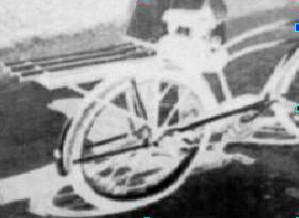
“Triple assembly of pulsejets” (PeT)
-Now, a curious engine with a difficult concept and operation but of proven effectiveness.
-It is the Johnson Smith of Michigan MEW 601 model. It works like a ramjet, the higher its speed the greater the thrust.
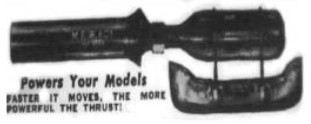
"The curious MEW 601 ramjet"
-It works by burning gasoline. The Co2 type bottle is on a tray to heat it.
-Behind it there is an augmenter or venturi that causes the greater the jet that comes out of the bottle the greater the thrust. However, the author has his doubts about this explanation.
-Below we show an experiment to go from jet propulsion to that of a rustic turboprop.
-A capsule and pellet type engine mentioned in the main text is used. They are the curious "Jetex".
-It is attached to a rudimentary turbine disk that drives a propeller, another propulsion system for model airplanes.

"Simple turboprop assembly"
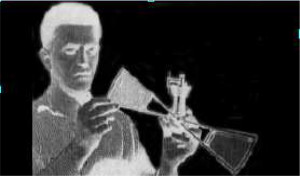
"A 1908 micromotor and its propeller of the time" (PiP)
-The small -and perhaps the first- U-22D turbojet for model aircraft was sold in Kit.
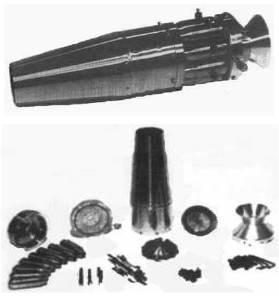
“North American U-22D mini-turbojet (1950’s)”
From Appendix 9: I have received a photograph of Frank Whittle with a reduction of one of his engines.
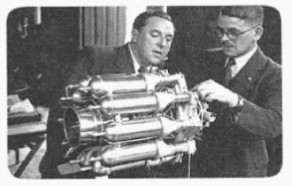
"Possibly at the Rolls-Royce design office"
-The author has located some piston micromotors built in Barcelona during the best time of circular model flight: the 1950s.
-Of the extraordinary activity of that time in terms of engines in all areas that took place in this part of the world, there is no doubt if we take into account that also in the field of micro motors for aviation, nautical and automotive modeling, true wonders were done.
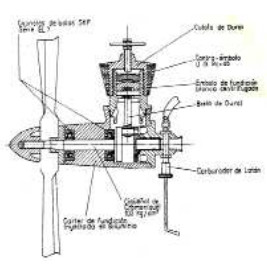
"One of the mentioned engines"
-There was the industry of the first magnitude, sticking out in automotive and aviation Hispano-Suiza (original), Elizalde SA, SEAT, Pegaso, Nissan, Ford-Ebro, Eucort, etc. and a large number of smaller cars, microcars, cyclecars and especially motorcycles with more than 190 registered trademarks.

“Romir ad”
-The manufacture of railway locomotives and marine engines by MTM (Maquinista Terrestre y Maritima) Vulcano, etc.
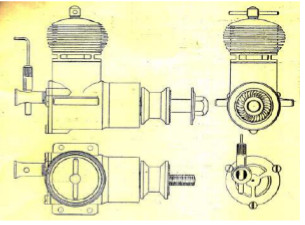
“Byra, 2.5 cc, Diesel”
-But to what we were going, micromotors of the smallest aviation:
- ”Byra”, by Fernando Batlló, with seven models.
- "Call", eight models.
- "Parés", one model.
- "Valls", two models.
- "Romir", three models.
- "Atom" by A-Mir, one model.
- "Cheetah", one model
- ”Jet“ Bycmo ”, four models
- "JP", two models.
- "Picó", one model.
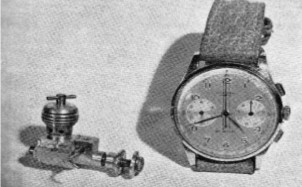
"A Picó next to a 40 mm chronometer"
-At Pegaso and Elizalde Apprentices schools, model aircraft engines were built as high-level exercises.
-Fernando Batlló, belonging to an important family of industrialists and engineers, made the Byra, which turned out to be very effective in circular race flight tests.
The entire range had roll bearings and gave a third of horsepower at 15,500 rpm.
-This is phenomenal for the time (1957), for being two-stroke and Diesel. The rotation could be reversible, changing the position of the rear carburetor.
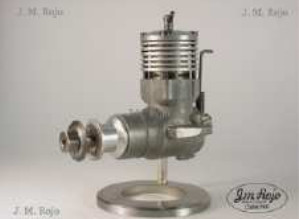
“Byra Mk III, 2’5 cc Diesel”
-The round heads gave way to Mk III, of which the author has an anecdote with F. Batlló himself in the blog section <aerospace engines.com>, chapter CLXXI.
-Here in Spain, we have a great collector of model aircraft engines that has brought together the main brands and has entered them on his website <www.rojobcn.com>, which is a real delight for fans of micro-mechanics.
-Fernando Batlló also made tests for the construction of pulsejets based on one that he won as a prize in a contest. Not in vain he was the undisputed champion of that time.
-He built two models called "Tornado" that were tested in the wind tunnel of the Barcelona School of Industrial Engineers, using the technical means available there.
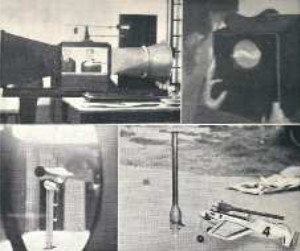
"Four photos of the Batlló pulsejets"
-These try-outs encouraged other fans and among them Arnaus and Ráfols who made 27 and 40 cm long engines that worked experimentally.
-While in the rest of the nation the following -known- engines were made:
-Parra, 7 models
-Payá, 2 models.
-Protozon, 1 model.
-ZOM, 12 models (the most important one in the second half of the XX).
-ZOM made engines and planes with an important range that covered the needs of this country for some decades. The engines were made by Modelhob.
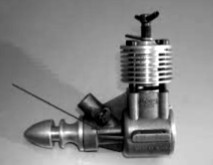
"The ZOM 2’49 with front carburetor"
-Around the world, Japan, France, USA, Germany, England, Russia (Ukraine) stand out.
-Currently, for speed in circular flight, Ukrainian engines (methanol.oil) are the most used for their performance.
From Appendix 10: An interesting cutaway of the small turboprop engine mentioned in the main text.
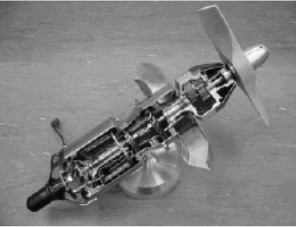
"Reverse Flow Turboprop"
From Appendix 12: In all times of aviation, micromotors of all kinds have been made.
-In the Flugsport magazine, we have found some interesting ones that we reproduce.
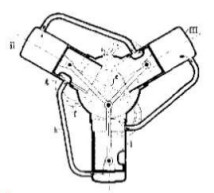
“Saran small compressed air motor, CO2”
-From Russia, there is also a similar engine with radial cylinders and CO2.

"The cylinder is an air tank"

“Spark-ignition engine, really nice”
-The author has observed that publications have come out with a huge number of model aircraft engines, well listed, and with details and characteristics.
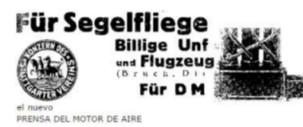
"Another 3-cylinder air engine"
From Appendix 13: There are some people who have very skilled hands and a very knowledgeable head of the mechanical construction profession.
One of these people, who lives nearby the author of this great summary of aviation engines (“Los Aerospace Engines, A-Z”), is Mr. Pere Tarragó. I know his work in the construction of small motorcycle models (1: 5).
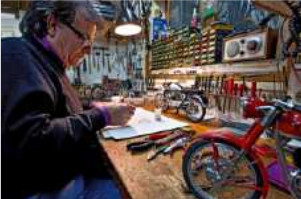
"Pere Tarragó in his Molins de Rei workshop"
-And now an exceptional job, a miniature aviation radial.
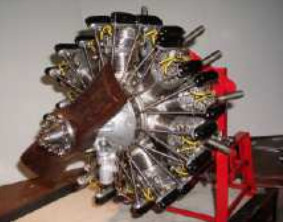
"A 14 cylinder -AS-"
-Russians, Englishmen, and Americans also build engines that work despite their small size, most are models of real models.


